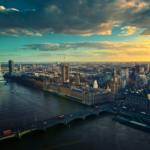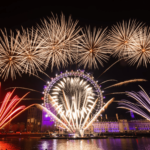
Top Summer Festivals Across Europe in 2025
Europe, with its rich tapestry of cultures, traditions, and history, offers a spectacular array of summer festivals. These events not only showcase the continent’s diverse artistic, musical, and culinary landscapes but also provide a unique opportunity for travelers to immerse themselves in the heart of local cultures. The summer of 2025 promises to be especially vibrant, with festivals that are both time-honored and innovative, offering something for every type of traveler. Here are some of the top festivals across Europe that should be on your radar.
1. La Patum de Berga – Spain
One of the most unique summer festivals in Europe is La Patum de Berga, held annually in the Catalonian town of Berga. This UNESCO-recognized festivity, usually taking place in late May or early June, is a raucous celebration of fire, music, and tradition. The highlight of La Patum is the procession of giant figures, fireworks, and monstrous effigies that fill the streets with excitement. The atmosphere is electric, as the locals and visitors engage in a joyful frenzy, dancing and singing as fireworks crackle overhead.
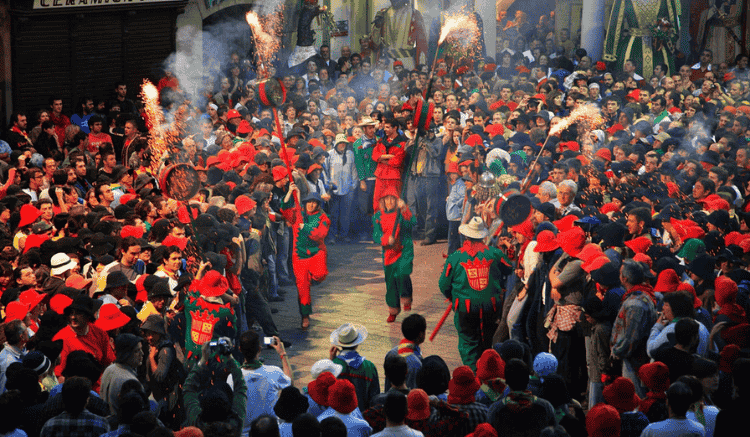
Unlike the more widely known festivals of Spain, such as La Tomatina, La Patum offers a more intimate experience, giving attendees a deeper connection to Catalonia’s unique cultural heritage. For those exploring beyond the major tourist cities, this festival represents the raw, unfiltered energy of regional Spain, offering an authentic taste of its traditions.
2. Tomorrowland – Belgium
Tomorrowland, held annually in Boom, Belgium, is the crown jewel of electronic dance music festivals. Known for its extravagant stage designs, world-class DJs, and a truly global audience, Tomorrowland has become synonymous with the peak of EDM culture. This festival transforms the small town of Boom into a larger-than-life celebration of music, art, and technology. With elaborate light shows, intricate stage setups, and performances from the biggest names in electronic music, Tomorrowland is an unmissable event for EDM fans.
While Tomorrowland attracts massive crowds, it also provides an opportunity for those interested in exploring Belgium’s rich cultural scene to discover lesser-known facets of the country. Whether it’s wandering the streets of Bruges or exploring the art scene in Antwerp, Belgium offers a balance between the grandiose spectacle of Tomorrowland and the understated charm of its smaller, hidden attractions.
3. Edinburgh Festival Fringe – Scotland
The Edinburgh Festival Fringe is the world’s largest arts festival and has become synonymous with creativity, innovation, and freedom of expression. Held every August in the heart of Scotland’s capital, the Fringe draws performers from all over the globe, showcasing a wide range of genres, from theatre and comedy to dance and experimental performances. The festival is renowned for its inclusivity, where established artists and emerging talents can share the stage and experiment with new forms of artistic expression.
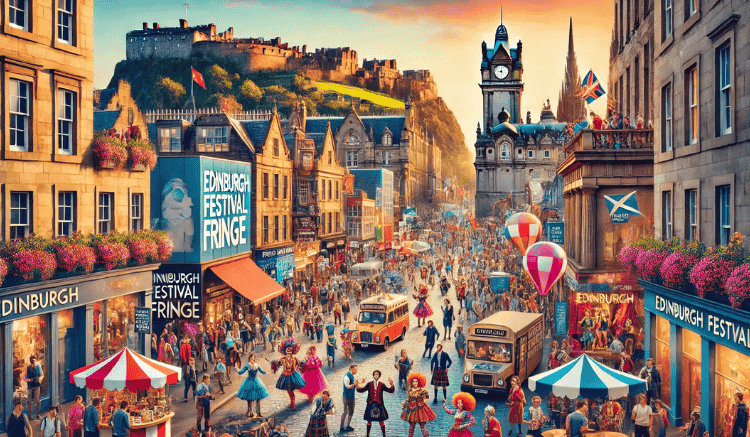
The Edinburgh Fringe offers more than just performances; it’s a celebration of artistic diversity and an exploration of new ideas. With over 50,000 performances across more than 300 venues, it is impossible not to be swept up in the festival’s exuberant energy. The streets of Edinburgh are transformed into a living canvas, with street performers, artists, and creatives filling every corner of the city. For those planning to attend, Trainline Tickets provide a convenient option for securing travel to the festival, offering access to a wide range of routes. Trainline helps streamline the journey, ensuring that your trip to Edinburgh is as seamless as the city’s artistic atmosphere.
4. Sziget Festival – Hungary
One of Europe’s largest music and cultural festivals, Sziget Festival in Budapest, Hungary, is held every August on the idyllic Óbuda Island in the Danube River. Known for its eclectic mix of music genres, including rock, pop, indie, and electronic, Sziget attracts attendees from across the globe. It is not just a music festival; it is a celebration of art, culture, and community. Over the years, Sziget has become a symbol of unity and freedom, with visitors from different backgrounds coming together to celebrate diversity through music and art.
Sziget’s multi-stage setup allows festival-goers to immerse themselves in an array of music styles and performances, while the island itself is transformed into a cultural oasis, featuring art installations, theatre performances, and workshops. Beyond the music, Sziget fosters a sense of camaraderie, where attendees forge lasting friendships in an environment of shared experiences.
5. La Fête de la Musique – France
Held every year on June 21st, La Fête de la Musique is a nationwide celebration of music in France. What began as an initiative by the French Ministry of Culture in 1982 has since blossomed into a global phenomenon, with cities and towns across France, as well as in many other parts of the world, participating in the festivities. The concept is simple yet powerful: musicians, both amateur and professional, take to the streets, parks, and public spaces to perform, creating an impromptu music festival that transcends genres and styles.
In Paris, the capital city, La Fête de la Musique transforms the city into a massive open-air concert hall. From classical performances in elegant squares to contemporary bands rocking out in neighborhood bars, the festival offers a vibrant musical mosaic. The inclusivity and accessibility of La Fête de la Musique make it one of the most beloved cultural events in Europe.
6. Glastonbury Festival – England
Glastonbury is one of the most iconic music festivals in the world, held annually in Somerset, England. Since its inception in 1970, Glastonbury has grown into a massive event, attracting over 200,000 festival-goers each year. The festival is renowned for its diverse musical lineup, featuring everything from rock and pop to electronic and folk music. However, it is not just about the music—Glastonbury has evolved into a cultural institution that celebrates art, activism, and community.
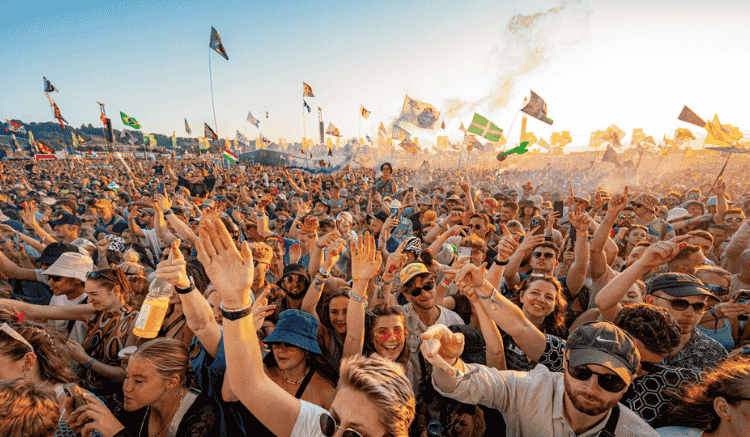
The festival’s sprawling site includes multiple stages, art installations, comedy shows, and even wellness areas, making it a comprehensive celebration of culture in all its forms. The Green Fields area, dedicated to sustainability and activism, serves as a reminder of the festival’s commitment to social and environmental causes. For those who are lucky enough to secure tickets, Glastonbury offers an unforgettable festival experience.
7. La Tomatina – Spain
La Tomatina, held in the town of Buñol, Spain, on the last Wednesday of August, is perhaps the most famous food fight festival in the world. Thousands of participants converge in the small town to engage in an epic battle, throwing over 100 tons of ripe tomatoes at one another. The festival began in 1945 as a spontaneous event and has since grown into a major international attraction.
While the concept may seem chaotic, La Tomatina is rooted in a deep sense of tradition, and the sheer joy and camaraderie displayed by the participants make it an unforgettable experience. The sight of a street covered in tomato pulp, with revelers laughing and dancing, is a true testament to the exuberant spirit of Spanish festivals.
8. Venice Carnival – Italy
The Venice Carnival, held each February, may not technically fall in the summer months, but it is undoubtedly one of Europe’s most famous and visually stunning festivals. Known for its elaborate masks, ornate costumes, and grand masquerades, the carnival transforms the canals and squares of Venice into a living, breathing work of art. Visitors can enjoy lavish balls, street performances, and processions, while also indulging in the city’s rich cultural and culinary offerings.
The Venice Carnival is a celebration of the city’s history and artistic heritage, offering a glimpse into the opulent past of one of Europe’s most romantic cities. The masks, which have long been an iconic part of Venetian culture, symbolize anonymity, allowing revelers to embrace a sense of freedom and intrigue. For those seeking to experience this breathtaking event without breaking the bank, finding cheap train tickets to Venice can be an excellent way to enjoy the festivities at a more affordable cost.
9. Festivals in the Mediterranean – Various Locations
The Mediterranean region, known for its stunning landscapes and vibrant culture, is home to numerous summer festivals. From the island of Ibiza’s electronic music scene to the classical concerts held in the ancient theaters of Greece, the Mediterranean offers a rich selection of summer festivals. Cities such as Barcelona, Nice, and Rome host open-air concerts, food festivals, and theatrical performances throughout the summer, attracting travelers seeking a blend of culture, history, and relaxation.
Whether you are strolling through the cobbled streets of an ancient town or lounging on the beach while enjoying live music, the Mediterranean’s summer festivals provide an exceptional setting for those looking to experience a fusion of sun, sea, and culture.
Conclusion:
Europe’s summer festivals in 2025 offer an unparalleled mix of music, art, history, and cultural expression. Whether you are drawn to the grand spectacle of Tomorrowland, the intimate traditions of La Patum de Berga, or the artistic freedom of the Edinburgh Festival Fringe, there is something to suit every taste. As you explore Europe’s diverse offerings, consider stepping off the beaten path to discover 20 Hidden Gems in Europe—festivals and locations that provide a deeper, more authentic connection to the continent’s vibrant cultures.




